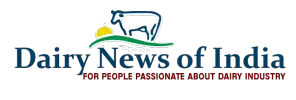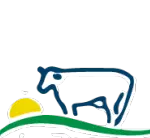Source:heraldgoa.in
Decision to introduce SUMUL taken as Goa Dairy allegedly failed to increase milk production, among other things; Management says farmers will remain with Goa Dairy due to better services, prices; Rejects claims of diverting milk to neighbouring states, providing substandard cattle feed
The government’s decision to allow Surat District Cooperative Milk Producers Union Limited (SUMUL) to implement its schemes and establish large scale dairy farms in Goa has been mired in controversy from the onset. The decision was taken as Goa Dairy had allegedly failed to increase milk production and provide support to milk producers, among other things. Despite the allegations, Goa Dairy continues to work steadily.
When asked if the government had set a deadline to improve milk production, Goa Dairy MD Navso Sawant said they had not received such a notice for many years. He said, “We provide better services, better rates to farmers, veterinary services, bonuses, and dividends. In recent years, Rs 1.5 crore was spent on medicines and treatment of cattle. The farmers are with us even though SUMUL is entering Goa.”
When asked how Goa Dairy had sustained itself for the last three decades, he said, “Better services, better prices for farmers and better milk for Goans. Our rates for Goans farmers have not decreased at any time compared to so-called big rivals.”
When asked about the allegations of the media and government that Goa Dairy is diverting 10,000 litres of milk to neighbouring states, Sawant rejected the same and claimed that Goa Dairy was importing around 10,000 litres of buffalo milk from Karnataka and Maharashtra. He said, “We process around 90,000 litres of milk daily in our plant and later supply it to the Goan market. At present, we have set a target of 1 lakh litres in the near future. We use all of the milk that is procured from the farmers; this includes around 75,000 litres of cow milk and 5,000 litres of buffalo milk, besides the buffalo milk imported from other states. Further, the government subsidy of Rs 10 per litre is directly credited to the bank accounts of the farmers, not directly to the Goa Dairy account.”

Sawant credited the increase in production to the government’s revised Kamdhenu Scheme.
Meanwhile, Goa Dairy Chairman Baburao Desai said that while there are complaints about the fodder and feed produced at the cattle feed plant, they rectify the same immediately. He also dismissed rumours that the fodder was substandard quality.
He further said that the Goa Dairy doctors, who are seven in number, attend to the farmers’ cattle at any time when called and also looked after complaints about the feed quality. He added that the Department of Veterinary Services and Animal Husbandry had around 40 doctors across Goa, but it still failed to ensure that the cattle provide more milk. He also stated that those doctors took leave on Saturday and Sunday, while the Goa Dairy doctors were on call round-the-clock.
“We sent so many proposals to the DVSAH, but it failed to respond or discuss the issue with Goa Dairy. For many years, Goa Dairy has been spending on medicines. However, recently the Animal Husbandry minister made an effort to provide medicines, which reduced the burden on Goa Dairy,” said Desai.
He also refuted the farmers’ complaints that the feed from the Goa Dairy cattle feed plant was of poor quality. He said, “In case of any complaint of poor quality from the farmers, our team of doctors, including our expert Doctor Kosambe, immediately rushes to the cattle feed plant.
The plant, which cost Rs 8.40 crore, was built under the Central government scheme ‘Rashtriya Krishi Vikas Yojana’ in six months.”
Goa Dairy Chairman Baburao Desai hoped for better services for farmers and customers. He said, “The same allegations are levelled and repeated in the media. Nothing is new. Since Goa Dairy is from the cooperative sector, complaints come from farmers, but we solve them. We spend a lot on many services for the cooperative sector and not after earning a profit. After expenditure on services, bonuses, and dividends, Goa Dairy makes a profit of Rs 40 to 50 lakh annually.”
He continued, “In the last 30 years, Goa Dairy has been functioning under a co-operative setup, with more than 18,000 milk farmers and their families depending on it. Over 180 dairy co-operative societies are involved in supplying milk procured from farmers. Goa Dairy also spends on cattle medicines. The treatment expenses in 2014 were Rs 1.5 crore.”
Goa Dairy MD Navso Sawant stated, “Due to a strong farmer base and better services for them, Goa Dairy has no problem in sustaining itself. The failure and non-cooperation of the Animal Husbandry Department officials and doctors have affected production. With the best available resources, 90,000 litres of milk is processed. After paying all expenditures and dues, it earns profits and is never in losses.”
When contacted, former Chief Minister Ravi Naik said it was a wrong step by the government. He said, “If the government thought Goa Dairy had failed in its affairs, it should have appointed a special committee to find the faults and rectify it. It should have helped Goa Dairy financially. The Sanjivani Sugar Factory in Dharbandora is going into losses, but the government is still spending crores of rupees on it. Compared to the factory, the financial position of Goa Dairy is better, and it has never faced losses. The government’s step to introduce another dairy to compete with Goa Dairy will affect the cooperative movement in Goa more and farmers are likely to suffer. The government should think of the Goa Dairy farmers and workers, who are large in numbers.”
Comments
comments




















